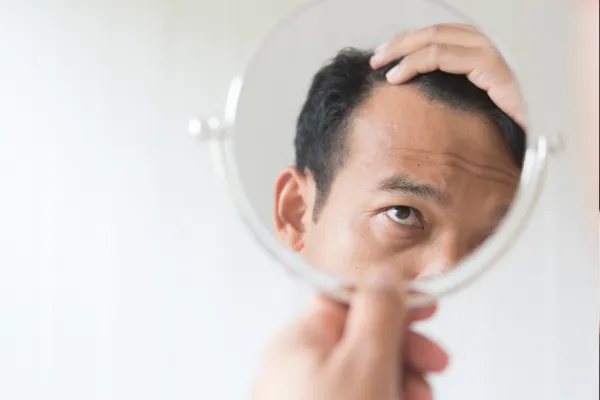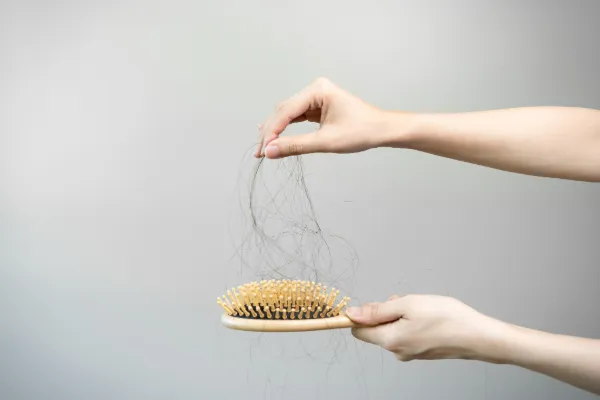この記事の概要
When considering hair transplant surgery, it is important to accurately assess the health of the scalp. A scalp test (scalp diagnosis) is an important step in evaluating the condition of the scalp and selecting the most appropriate treatment. This article details the importance of the scalp test, how it is performed, and the treatment plan based on the diagnostic results.
The Importance of Scalp Testing
1. Assess your scalp health
A scalp test is necessary to provide a detailed assessment of the health of your scalp.
Presence or absence of inflammation or infection: If there is inflammation or infection in the scalp, proper treatment is required before undergoing the hair transplant surgery.
Sebum production: Excessive sebum production can lead to clogged hair follicles and inhibit hair growth.
Circulation: Evaluate the circulation of your scalp and take measures to support healthy hair growth.
2. Understanding the hair growth environment
A healthy scalp environment is essential for hair growth, and the scalp test allows us to accurately determine the environment in which hair grows.
Hair Follicle Health: Check the health of your hair follicles and identify factors that inhibit hair growth.
Stratum corneum condition: Evaluate the condition of the scalp’s stratum corneum and determine the appropriate treatment.
3. Choosing the best treatment
Based on the results of the scalp test, the best treatment can be selected for each individual patient.
Indications for Hair Transplant Surgery: We will assess the condition of your scalp and determine if hair transplant surgery is the right option for you.
Suggestion of complementary treatments: If necessary, we will suggest other complementary treatments in addition to the hair transplant procedure (e.g. low level laser therapy or medication).
How to perform a scalp test
1. Physical Inspection
A physical exam involves visually and tactilely assessing the condition of the scalp.
Visual Inspection: Visually check the scalp for redness, irritation, and dandruff.
Tactile examination: The scalp is assessed by palpation for softness and elasticity.
2. Magnifying Glass Examination
A magnifying glass is used to closely examine the scalp and hair.
Hair follicle condition: The hair follicles are examined under a magnifying glass to see if they are clogged or damaged.
Hair thickness and density: Measure hair thickness and density to assess the progression of hair thinning .
3. Digital Scalp Analyzer
The Digital Scalp Analyzer uses a high-resolution camera to record detailed information about your scalp and hair condition.
Image Analysis: Digital images are analyzed to assess scalp health and hair growth cycle.
Data storage: Store diagnostic results in a database and track treatment progress.
4. Biopsy (if necessary)
If severe hair loss or scalp abnormalities are suspected, a biopsy (tissue test) may be performed.
Tissue sampling: A small tissue sample from the scalp is taken and analysed under a microscope.
Pathological examination: A tissue examination is performed to thoroughly evaluate the pathological condition of the scalp.

Treatment plan based on scalp test results
1. Assessment of suitability for hair transplant surgery
Based on the results of the scalp test, we will evaluate your suitability for hair transplant surgery.
Surgery suitability: We will consider the health of your scalp and your hair growth cycle to determine whether hair transplant surgery is appropriate.
Surgery planning: A detailed plan for the hair transplant surgery (selection of donor area, number of hairs to be transplanted, etc.) will be made.
2. Proposal of adjuvant treatment
If necessary, we will suggest complementary treatments in addition to the hair transplant procedure.
Low Level Laser Therapy (LLLT): A treatment aimed at increasing blood circulation and activating hair follicles.
Medications: Medications such as finasteride and minoxidil are used to slow the progression of hair loss and promote hair growth.
3. Scalp care recommendations
We will suggest daily scalp care methods to maintain a healthy scalp.
Choosing a shampoo and conditioner: Choose a shampoo and conditioner that is gentle on your scalp and use it regularly.
Scalp massage: You will be taught how to massage your scalp to increase blood circulation.
Diet and Nutrition: A balanced diet and supplements are recommended to support hair health.
4. Regular follow-up
We will monitor your progress and adjust your treatment plan if necessary.
Regular Check-ups: Regular scalp tests will be performed to evaluate the health of your scalp and the effectiveness of treatment.
Treatment plan review: Based on the diagnosis, we will adjust your treatment plan accordingly to provide you with the best care.
Summary
A scalp test is an essential step in the success of your hair transplant surgery and maintaining healthy hair. A detailed assessment of your scalp health and the selection of the most appropriate treatment will maximize the effectiveness of your hair transplant surgery. It is important to develop an appropriate treatment plan based on the results of your scalp test and practice daily scalp care. Work with your specialist to maintain a healthy scalp and beautiful hair.







